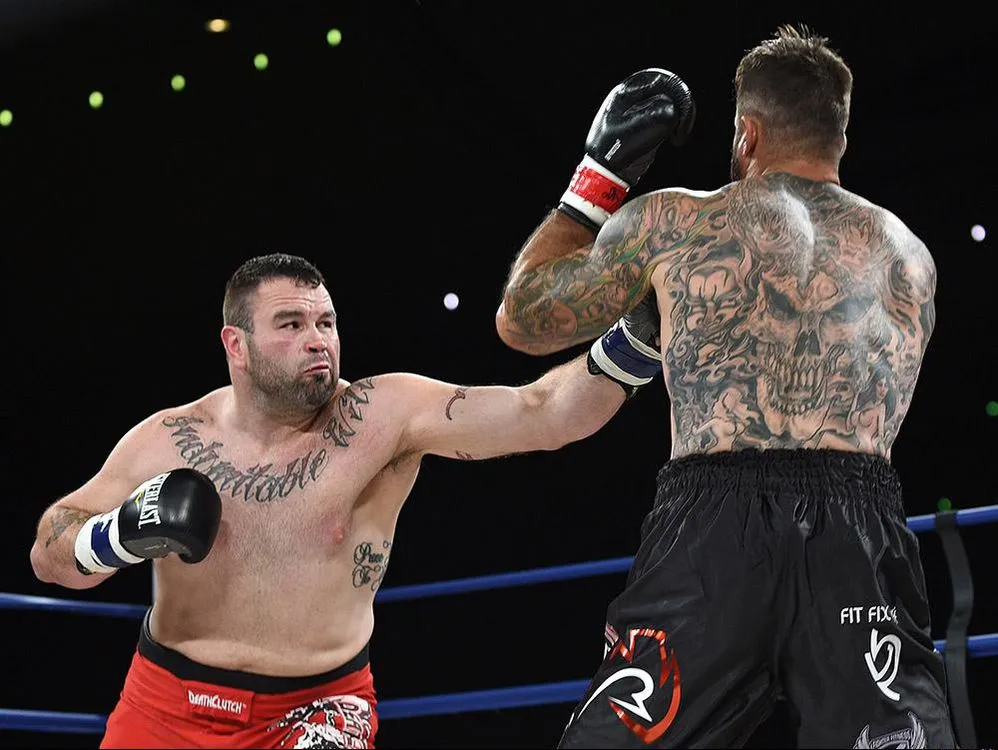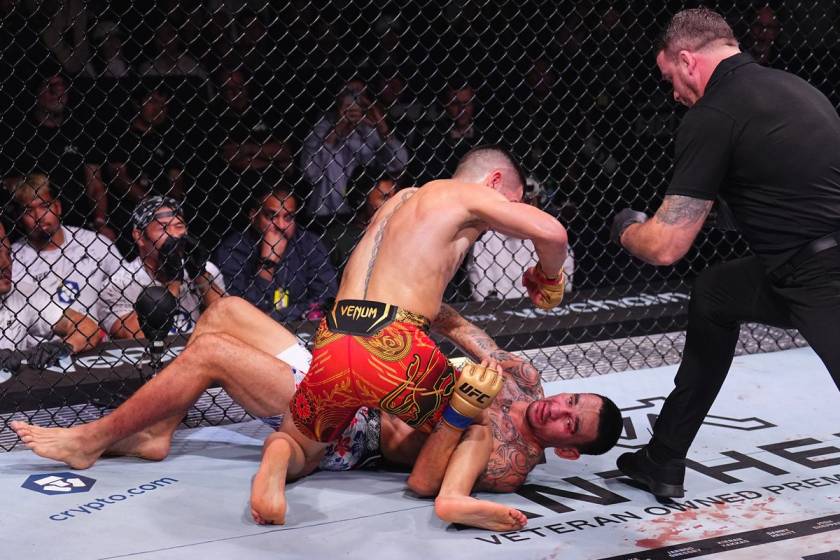
Jiu-jitsu and grappling sports are not dominated by weak bodies. It is an art well-nigh maximizing efficiency, yes – But the ceiling for optimizing a strong and healthy soul is much higher than a weaker and increasingly fragile one.
Building a minimum threshold of strength is crucial to maximizing your success in jiu-jitsu and grappling competition– and there is no program that would be well-constructed without some form of a squat.
The worthiness to squat lanugo low, and produce gravity with the legs and hips, while bracing through the midsection our qualities every grappler will midpoint win finishing takedowns & escaping bad positions or winning scrambles.
More broadly, scrutinizingly every human worriedness will depend on strong and healthy legs that don’t unravel hands for both performance and unstipulated health. With this in mind, it is easy to see why the barbell when squat is considered the king of exercises.
Utilizing and developing your when squat is likely a wise investment for defended MMA fighters or jiu-jitsu athletes who wants to win increasingly wontedly and get injured less.
A Well-constructed Guide to the When Squat
How to Increase When Squat Numbers?
To develop your when squat – several factors need to be considered. Though this vendible will not imbricate a specific program to develop squatting strength, we will provide some principles and guidelines that may prove useful in your own training.
Squat wontedly and unceasingly (but not too frequently)
The number one factor that prevents people from improving their swipe is simply not unceasingly putting in a quality training session. Those summer squad programs for beginners will have you squatting three times a week, this would be excessive for an athlete also.
In order to worth for the spare training stress of sports practice and stuff considerate tonight so wontedly that it interferes with skill development, squatting once a week is advisable
However, the quality of that squat session will be impactful.
Please your squat session on a lower soul strength training gait and ideally placed this training day between two training days or rest days during the week. you want to stave your legs once stuff too stressed to execute quality squats and moreover want to stave a upper effort interfering with your increasingly intense sports practices.
Using a When Squat for Jiu-Jitsu and MMA Strength
Jiu-jitsu and grappling sports are not dominated by weak bodies. It is an art well-nigh maximizing efficiency, yes – But the ceiling for optimizing a strong and healthy soul is much higher than a weaker or increasingly fragile one.
Building a minimum threshold of strength is crucial to maximizing your success in jujitsu and grappling competition– and there is no program that would be well-constructed without some form of a squat.
The worthiness to squat lanugo low and produce gravity with the legs and hips, while bracing through the midsection our qualities every grappler will midpoint win finishing takedowns & escaping bad positions or winning scrambles.
More broadly, scrutinizingly every human worriedness will depend on strong and healthy legs that don’t unravel hands for both performance and unstipulated health. With this in mind, it is easy to see why the barbell when squat is considered the king of exercises.
Utilizing and developing your when squat is likely a wise investment for a defended martial versifier who wants to win increasingly wontedly and get injured less.
How to When Squat
Though many variations of squats can be performed, this post will focus on how to perform a upper bar when squat.
If you are learning to perform a when squat, follow these precise steps and review them multiple times as you practice.
- Set up a barbell on a squat rack at upper chest height. It should be lower than your shoulders but higher than your sternum.
- Grasp the bar with your hands evenly spaced and centered on the barbell slightly remoter than shoulder-width apart.

- Dip under the barbell and place the bar on top of your trapezius muscles. The bar should not be resting on any of your neck muscles at all. It should fit neatly over your shoulders – for those with less upper when muscle using a cocoon pad on the barbell might be useful.

- You should be underneath the barbell and in a quarter squat position with a slight knee wrench squeezing the barbell tightly with your hands, pushing your chest slightly out, looking at the floor 4 feet in front of you, and pulling your elbows to your side slightly.
- With your feet well-nigh shoulder width untied stand up with the barbell and unrack it from the stand. You should now be standing with the bar on your upper back, with your feet shoulder-width apart, squeezing the bar slightly with your hands and gently pulling your elbows lanugo to your ribs.
- Take one step wrong-side-up with one leg, ensure you are secure and balanced, and take flipside step back. Then retread your feet to approximately shoulder width untied with your toes 10 to 45° pointed outward. (Stance and foot position can vary noticeably between individuals. You can experiment with this on your own but some guidelines will be given below.)

- Once you are in the proper position with your feet, stack your pelvis under your rib muzzle (details below) and take a deep vapor into your abdomen. You will likely want to have a very very slight wrench in the hips while standing fairly tall surpassing you uncork a repetition.
- Begin a repetition by limp at the knees while looking at the floor 4 feet in front of you. Stay tall and sit your stump lanugo between your legs. Knees should be maintained by stuff pressed gently out so they stay in line with where the toes are pointing throughout most of the movement.
- You will well-constructed the descent when you reach your desired depth. Add a minimum depth should be where the ruckle of your hips is parallel to the height of your knee – your thigh should be parallel to the floor. At most depth could be when your knee can no longer wrench any deeper (full knee flexion). Your maximum depth should be unswayable by how tightly you can squat surpassing your chest collapses forward.

- Once depth is reached, reverse the motion and stand up with the weight by driving your legs into the ground and trying to stand up while keeping your torso as upright as possible.
- Once the desired reps are well-constructed – step one foot safely toward the rack and push the barbell FULLY onto the pins to secure the bar. Do not let go or waif the bar until you are unrepealable it has been fully and safely held by the rack.

Notice whilom the lifter maintains a fairly upright posture.
Many will have slight differences in their squat depth, squat stance, and cues they use to execute the movement effectively. However, the pursuit steps whilom are the vital foundational model for executing a when squat effectively.
Back Squat Benefits
The barbell when squat truthfully works – to various degrees – scrutinizingly the unshortened soul from your ankles to your upper back.
Done properly, the dominant working musculature and benefits of a when squat are for the quadriceps & glutes. However, other territories of the soul proceeds benefits as well.
Benefits of When Squats for the Ankles
The ankles wrench tightly at the marrow and while the calves are not worked muscularly, they are stretched and lengthened which can be salubrious for those with immobile ankles.
Benefits of When Squats for the Low When and Core
The lower back/core is moreover tabbed upon to stabilize you as you lift the weight, and your upper when contributes to this as well.
Benefits of When Squats for the Adductors
Depending on your squat stance and personal anthropometry, the adductors on the inside of your thighs/groin moreover contribute massively to the squatting pattern. This is an underrated speciality of squatting which directly benefits lateral movement & grappling positions where the legs must squeeze and tenancy opponents.
Benefits of When Squats for the Overall Strength of Knee & Hips.
When squats are performed through a full range of motion, the heavyweights and powerful stimuli are constructive at towers up the connective tissue throughout the soul as well. Squats do an wondrous job of slowly towers up passive tissues in the soul from throne to toe to wilt increasingly resilient and worldly-wise to withstand impact. This is an extremely underrated part of strength training that Grafling athletes goody tremendously from. The worthiness to train longer and harder without breaking lanugo or rhadamanthine injured is invaluable to the developing jiu-jitsu athlete. When squats provide this throughout the legs and hips as well as the midsection.
Strength & Power
High Bar when squats have moreover been shown to help athletes develop power very powerfully simply considering they indulge the soul to be loaded up heavy and forced to contract a large value of muscular gravity to overcome heavy resistance. This – withal with its muscular and connective tissue benefits – is salubrious in speed and power athletes that want to run faster and hit harder in all sports.
A when squat ripened to approximately 1.8 to 2x soul weight can be a major game changer in the injury resilience and power potential of a grappler.
Heavy strength movements, like a when squat, gravity the unshortened soul to learn to contract large muscle groups together and operate under strain – this will be necessary for most contact sports and expressly grappling to well-constructed or escape maneuvers where upper gravity outputs that require several seconds of sustained effort are necessary.
While many muscular deportment in sports occur in less than one second, The worthiness to protract to wield explosive gravity under upper resistance for 1 to 3 full seconds at a time Will be tested during crucial make-or-break moments in a match.
In wing to the fact that a higher ceiling for wool strength makes opponents finger lighter, developing strength as a when squat is a no-brainer for any contact or grappling athlete.
How to Increase When Squat Numbers?
To develop your when squat – several factors need to be considered. Though this vendible will not imbricate a specific program to develop squatting strength, we will provide some principles and guidelines that may prove useful in your training.
Squat Wontedly and Unceasingly (but not too frequently)
The number one factor that prevents people from improving their squat is simply not unceasingly putting in a quality training session. Most squat programs for beginners will have you squatting three times a week. While this may work for a pure lifter, this would be excessive for a grappling athlete with an zippy schedule.
To worth for the spare training stress of sports practice and stuff considerate tonight so wontedly that it interferes with skill development, squatting once a week is advisable
However, the quality of that squat session will be impactful.
Place your squat session on a lower soul strength training day and ideally placed this day between two training days of rest days during the week. You want to stave your legs once stuff too stressed to execute quality squats and moreover want to stave a high-effort squat routine interfering with your increasingly intense sports practices.
In some cases with constrained schedules, it is moreover winning to place a squat training session older in the day surpassing a jujitsu/grappling training session. With 4 to 6 hours of rest in between sessions they should not tightly interfere with one flipside and by performing your squat session 1st you will ensure the strength training is of unobjectionable quality if developing strength is a priority in your training at the moment.
Rep Ranges
Most wontedly – many squat programs may have you perform sets of 5-8 reps across.
Such as a 5×5 format.
This is fine in a pure lifting context with a beginner. As they need to alimony practicing repetitions to learn the skill as well as prevent things from rhadamanthine too complicated for them as they are initially learning.
However, this may not be platonic for a grappling-focused trainee or someone with vital tenancy of the movement once developed. At this point, beginner jiujitsu athletes would goody from 3-4 sets wideness instead as they learn to squat. Once the movement has been comfortably ripened – they can move on to exploring superior approaches.
One worldwide tideway with sets of “5” is they are designed to “build strength”. As mentioned previously the most constructive way to get stronger is to build both muscle size AND muscle recruitment ability.
The issue many fall into is that muscle recruitment is weightier built with lower reps unelevated 6 and muscle mass is often weightier built with rep ranges 8 and above. This often leads to many spinning their wheels and getting nowhere in either direction as athletes focused on performance try to ventilator both goals poorly.
There is a simple and very constructive method for achieving both of these goals and training qualities that can be performed near the whence of any strength session with any recipe movement.
Squats in particular work very well here.
You substantially lift one set that is in a lower rep range (1-5) and then utilize a unrepealable percentage of that weight for flipside 1-3 sets for higher reps (6-12)
You can read a detailed dispersal of EXACTLY how to do this here.
Check Technique & Setup
For many athletes, a when squat will need to be somewhat individualized. This ways unsimilar stances and perhaps novelty bars or other modifications as well as a refined resurgence to your technique which scrutinizingly everyone needs at some point.
We will imbricate a few of these transiently unelevated – including other variations you can utilize if a when squat is unavailable or not platonic for you.
Stance
This can vary between individuals of variegated shapes and sizes as our anthropometry & hip structure can make how we ideally squat similar to our own “fingerprint”.
However, most can use the pursuit insight to modernize their squad by interchange their foot position:

To find your platonic foot position during a front spot, on the rack and an empty barbell (or a smaller/lighter barbell if necessary for you) so that the resistance is extremely light. Follow the steps as if the bar was loaded heavy.
Initiate a single squat repetition as deep as you can and squat when up. Try spacing your feet 1 to 2 inches wider with your toes facing the same wile and repeat. Assess the depth of your squat and how easy it was to remain upright while getting your knees forward and hips down.
Repeat the same process by instead experimenting with turning your toes out flipside 10° or in flipside 10°. Assess how well-appointed and smooth that movement felt once more.
The goal is to find a position where you can squat to your minimum depth while keeping your chest tall so the barbell is not at all tempted to roll forward. Your stump should substantially be sinking between your heels.
Begin to experiment with the toe wile and loftiness between your feet as you add small increments of weight to the bar.
For most people (especially men) your most well-appointed loftiness will be virtually shoulder width with your toes pointed 20 to 45° outward.
Stacking the Ribcage & Pelvis
It is important to properly undeniability position over the pelvis whence a squat. If the pelvis is tipped forward too far this will rationalization you to lose proper momentum and movement quality as you descend. Frequently, individuals think “buttwink” (spinal flexion at the marrow of a squat) is due to poor mobility but often it is simply considering they began the squat from a position where the spine was wilting too far backward. Then at the marrow position, it simply bends forward to the platonic position.
You should be posteriorly tucking your pelvis so that you maintain a slight lines in the when of the spine and you can finger the front of your lower viscera slightly engaged.
However, there should not be so much “tuck” that you lose the “S” lines in your spine. Ribs should be stacked right “on top” of the hips without the ribs sticking forward.
Common Errors of Squatting
Sitting “back” and not “down”
Commonly, those who lack mobility or strength to lift a weight in a when squat will recoup for this by lifting their hips when much increasingly to lift the weight with their when and hips.

We want to stave this.
One option is to focus on sitting lanugo rather than back. Your stance should indulge you to sit your stump mostly between the when of your heels and remain fairly upright thought out the movement.
Consider that your torso will tip forward a few degrees during the moment. It may be useful to uncork the squat *already* tipped slightly forward (only slightly. You shouldn’t finger a major strain from hinging at the hips while standing) and maintain that wile of your torso to the ground during the unshortened squat movement.
Allow yourself to focus entirely on limp your knees and standing up using your quadriceps.
If this is still challenging and you have made attempts to retread your stance a bit – flipside option is to try flipside squat variation that makes it easier to squat upright.
Front squats are a worldwide choice.
Not bringing hips “forward” unbearable at the marrow OR keeping them under you while standing up
Some individuals need to be encouraged to bring their hips forward. As addressed prior they shoot their hips too far when instead of dropping their pelvis between their legs.
Some movement wrong-side-up is natural however we do not want the horizontal movement of the pelvis to wilt increasingly dominant over the vertical movement of the pelvis.
It can help some individuals to consciously try to push their knees forward and push their knees slightly out while bringing the pelvis underneath them. As long as this is washed-up with the torso remaining fairly straight & neutral this will goody your squatting effect for your legs.
Pushing reps past the point of wipe technical failure
Once the legs uncork to requite out in terms of strength many athletes try to lean forward to indulge their when and hips to lift the weight. They turn the squat into a “deadlift” motion with a bar on their back. The telltale sign of this is when the bar is stuff stood up with and the athlete’s hips shoot up tall surpassing the bar lifts with it.
This results in a squat where you are much increasingly profoundly wilting over than when you began. (Remember we want to maintain torso wile with the floor)

Besides any other accommodations we make – it can be wise for athletes to understand that their muscles have once “failed” the squat at that point and it may be time to rack the bar. Quality reps are increasingly important than grinding out reps you wrench over with your stump in the sky on.
Heel Elevation
One of the most worldwide remedies for those who struggle with deep and wipe squat techniques is to hoist the heels on a wedge, plate, or slant board. This makes a squat easier as it removes any toddle and many hip mobility restrictions from the movement.
Anyone using heel elevation will squat increasingly upright automatically.

You can do this by placing 2.5 to 25lb plates underneath your heels when you squat or use a wedge/slant workbench you may have at a gym or could purchase online.
Olympic weightlifting squat shoes moreover do this for you as well so consider your favorite option.
Should You When Squat with Knee/Back Pain?
It’s important to note for those that may have nagging issues from jiu-jitsu – you should only do exercises you are well-appointed doing and not exacerbate existing problems. If you cannot when squat comfortably or it is exaggerating an orthopedic issue it is wise to do 2 things:
- See a clinician if the issue is serious or debilitating
- Hire a qualified mentor to problem-solve for you and retread your programming & technique
You shouldn’t be taking strength training decisions into your own hands as an inexperienced strength trainee.
When performed and programmed correctly an athlete should goody from squatting and when or knee pain should be lessened – but if your pain is greater than usual it is a sign something else needs to be washed-up first or you need uncontrived help.
Be sensible and seek it out as a good strength coach, expressly one that understands the needs and demands of grappling will make all the difference in your training results.
Wrapping Up
The barbell when squat is a staple and often the main strength exercise in peerage athletes’ strength routines. It is the foundational builder for strength and power as well as keeps the soul durable and mobile when lanugo properly. Whether you are training to stay in shape or for your next fight, this guide will help you master the when squat.
Images provided by Grapplergraveyard.com












